CC10. What Do YOU Think About Climate Change?
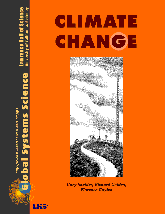
Chapter 10
We have considered actions by the U.S. government and other governments to slow global climate change. It’s important to recognize, however, that it is not just government officials who can make a difference. Every person in the world contributes to the changing atmosphere, and people in industrialized countries like the United States contribute the most. Therefore, it’s important for all of us to be aware of how we affect the climate and to decide what each of us, as individual citizens, wants to do about it.
In this chapter you will be asked to examine your own understanding and opinions about global climate change in four key areas: science and technology, economics, politics, and ethics; then, to examine your actions—the choices that you make as a citizen and a consumer. You will not be told what to believe, but rather to decide if your actions are consistent with your understanding and beliefs.
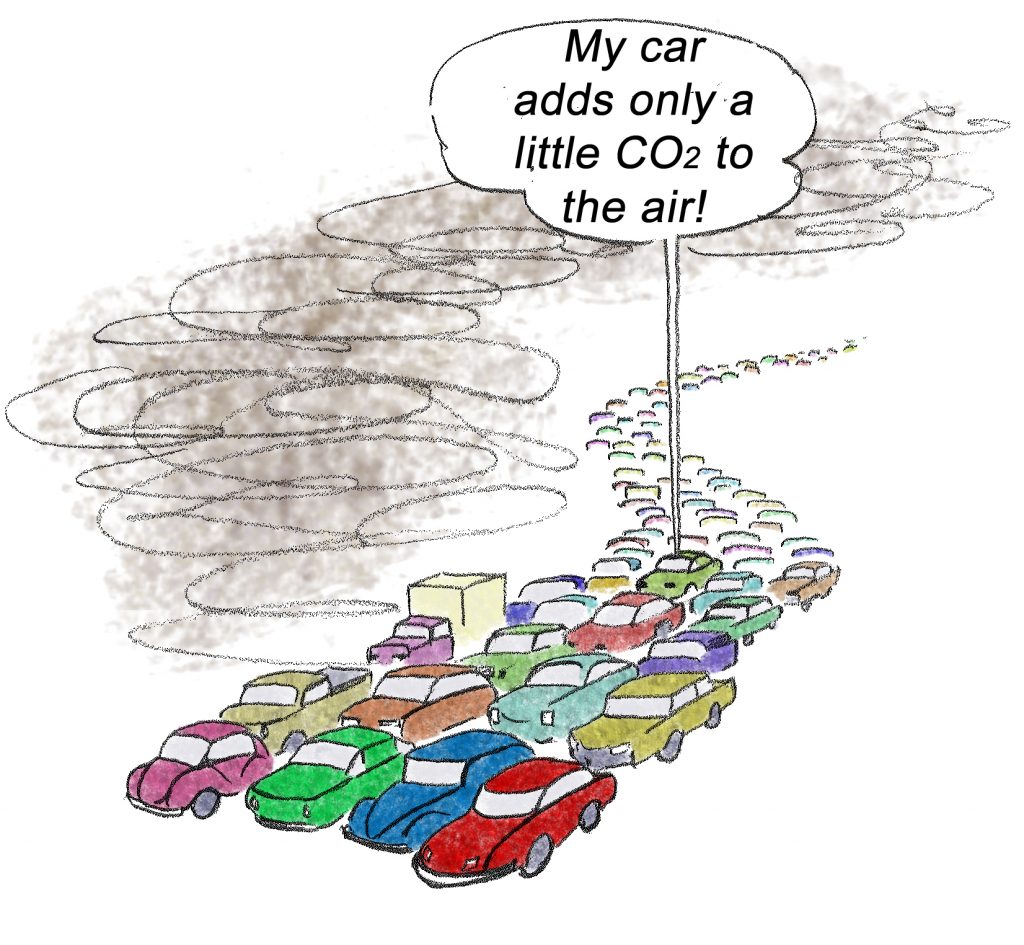
But first, let’s take a critical look at the first sentence in this chapter. In particular, have “actions by the U.S. government …to slow global climate change” been overshadowed by actions by the U.S. government to promote fossil fuels! Please have a look at the lawsuit JULIANA V. UNITED STATES, that was filed August 12, 2015 by 21 young Americans. Their complaint asserts that the government’s actions supporting the fossil fuel industry result in climate change and has violated the youngest generation’s constitutional rights to life, liberty, and property, as well as failed to protect essential public trust resources. Our Childrens Trust website has a timeline, www.ourchildrenstrust.org/juliana-v-us, showing in detail the progress of this lawsuit that spanned several years. It inspired subsequent lawsuits, including the US’s first constitutional climate trial in June of 2023. In that case, the judge ruled in favor of a group of young plaintiffs who had accused state officials in Montana of violating their right to a healthy environment [see news article https://www.theguardian.com/us-news/2023/aug/14/montana-climate-trial-young-activists-judge-order]. The plaintiffs testified that Montana state policies violated provisions in the state constitution that guarantee a “clean and healthful environment.” Judge Kathy Seeley said in her ruling that by prohibiting government agencies from considering climate impacts when deciding whether or not to permit energy projects, Montana contributes to the climate crisis and stops the state from addressing that crisis.
I. Science & Technology:
What Do We Know About Climate Change?
It is up to scientists and engineers to study climate change, to predict its impact, and to figure out ways to cope in a warmer world. It is up to you, as a responsible citizen, to follow this research as it is reported on television, in newspapers and magazines.
Monitoring the Environment
The U.S. government sponsors scientific research stations all over the world to measure the state of the atmosphere and the current levels of greenhouse gases. The network of monitoring stations also includes satellites that keep track of the temperature of the atmosphere and oceans, the condition of sea ice around the poles, and the amount of radiation coming from the Sun. A number of federal agencies are responsible for collecting the data and making them available to the public.
Predicting the Effects of Global Warming
The first predictions of global warming by Arrhenius, 100 years ago, were based on a theory of how the Earth-atmosphere system might react to changes due to the industrial age. Since that time, a great many scientists and engineers have made detailed studies to improve the theory and construct computer models of the Earth-atmosphere system.
These models cannot predict what will occur in small regions of the world, but they all agree that major changes in climate will result over the next century if greenhouse gases continue to build up in the atmosphere. In recent years the accuracy of these models has been improved by adding the effects of aerosols—fine particles released into the air by power plants, cars, and factories. These models have been tested by comparing them with past climate changes. Further research is needed to take into account the role of clouds and the ocean.
Reducing the Emission of Greenhouse Gases
Energy conservation is currently the cheapest way to reduce the emission of greenhouse gases. If everyone were careful about using energy, we could reduce the emission of greenhouse gases and save money. Engineers are developing more efficient refrigerators and also more efficient appliances for lighting and heating. The aim of these efforts is to reduce the need to burn fossil fuels and to keep carbon dioxide locked in the ground a little longer. Development of alternative energy sources such as wind, solar, and safe nuclear energy are other projects that engineers are working on.

CC10.1a. Investigation: Net-Zero America
Using Princeton University’s Net-Zero America website,
- Watch a 7-minute summary of the Net-Zero project.
- Download and read the table of contents of the Net-Zero Final Report or the Final Report Summary.
- Pick one or more sections to study and write your analysis and thoughts to share with others who may be interested (fellow students, teachers, parents, ….). Start with some general statements about what the Net-Zero project is.
- More climate solutions ideas are in investigation CC10.5. Climate and Renewable Energy Solutions
Finding Ways of Coping in a Warmer World
Even if the government undertakes a strong program to reduce the emission of greenhouse gases, they will still build up in the atmosphere, but more slowly than if we do nothing. In the meantime, we can greatly expand efforts of scientists and engineers who are exploring ways to cope with a warmer world. For example, since plants need carbon dioxide for photosynthesis, most plants grow better in an atmosphere that is rich in carbon dioxide. The problem is to find food plants that will produce nutritious crops and do better than the weeds and insects, which also will do better with more CO2.

Some scientists are studying ways to help wildlife adjust to changes in habitat as the climate changes. These efforts may help endangered species establish new colonies, or provide “migration corridors” where land development is halted or restricted so that the animals can migrate on their own.
II. Economics: What Are the Costs Associated with Climate Change?
We can’t know if the first humans to discover how to control fire were appreciated by their fellow cave dwellers. What is certain is that from then on the use of fire became an important aspect of social policy. As a result, fewer people died from cold and attack by animals. Later, the ability to control fire led to the development of cooking, the extraction and use of metals, and many other processes that form the basis of civilization.
The invisible by-product of fire—carbon dioxide—had long been ignored. Today the heat from fossil fuels and its carbon dioxide production is so much a part of our industrial way of life that any attempt to reduce the production of the gas will change our lives in profound ways.
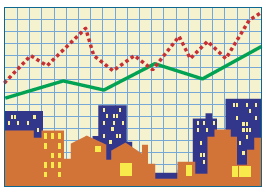

Even in earlier times, when wood was used for heating and cooking, energy had its cost. It required work to cut and haul the wood to where it was to be burned. Where populations grew quickly, forested areas were stripped, and people had to go further to obtain wood. Switching to coal and then to oil and natural gas was a response to the need for a continuing supply of fuel that was plentiful and cheap. The choice of which fuel to use and how much energy to produce has always been an economic choice, decided by balancing the benefits of that energy with its costs.
QUESTION 10.1
- What kind of fuel is used in your home?
- What kind of fuel is used in your school?
- What kind of fuel is used when you travel?
- Do these add carbon dioxide to the air?
- Are there any economical alternatives available to you?
- What are some of the hidden (or external) costs of using fossil fuels—costs that you or others pay for later? (make a list)
Watch the video “Leave It In The Ground” (The Oil/Tar Sands) from ETOM (Earth the Operator’s Manual) and see if you can add to your list of hidden/external costs of using fossil fuels.
August 2015: A new report from Citibank states that investing in low-carbon energy would save the world $1.8 trillion through 2040. Not acting will cost $44 trillion by 2060 from the “negative effects” of climate change. Here are two quotes from the report, Energy Darwinism:
- “…The incremental costs of following a low carbon path are in context limited and seem affordable, the ‘return’ on that investment is acceptable and moreover the likely avoided liabilities are enormous. Given that all things being equal cleaner air has to be preferable to pollution, a very strong ‘Why would you not?’ argument begins to develop.”
- “Overall, we find that the incremental costs of action are limited (and indeed ultimately lead to savings), offer reasonable returns on investment, and should not have too detrimental an effect on global growth….”
Implementing renewable energy sources and improving efficiency would very likely boost the global economy. The report also addresses the cost of stranded assets, i.e. to prevent 2ºC of warming, a third of the world’s oil reserves, half of its gas reserves, and more than 80 percent of its coal reserves need to stay in the ground, or be used at a dramatically reduced rate.
III. Estimating the Costs of Global Warming
The fuels we use may be the cheapest ones available. In the long run, however, they may actually be very costly. If they contribute to global warming, what would be the real cost to us or our children? Estimating costs is very difficult because we cannot accurately predict the effects of global warming. However, we can imagine various possible scenarios. For example, if sea levels rise, it may become necessary to build seawalls and dikes, or to resettle large groups of people around the world. We can estimate the costs of these actions, as well as the increased costs of health care for the elderly in the case of long spells of hot weather, and the costs to agriculture of droughts or floods.
Consider the case of San Francisco Bay. During the most recent Ice Age, which was only about 5°C cooler than now, water levels were 200 feet lower than now. San Francisco Bay was a meadow. When the climate warmed, glaciers melted and the volume of seawater expanded, filling San Francisco Bay to its present level. If the globe warms further, scientists predict the sea level will continue to rise, flooding the low-lying areas of San Francisco, Oakland, Berkeley, and other cities that ring the Bay.
If sea levels rose by 10 feet over the next century, $48 billion worth of structures would be destroyed in the San Francisco Bay Area alone, according to researchers. Partial protection could be provided by seawalls at a cost of more than $1 billion, plus $100 million annually for maintenance. The researchers recommend prohibiting future construction in low-lying areas (see Barnum in the Bibliography).
The potential economic problems are even worse for people who live on islands. Many of these concerns were expressed on September 27 and 28, 1999, at a United Nations special session on climatic threats to island nations. Delegates pointed out the tremendous impact on their economies due to the loss of fresh water, reduced land for agriculture, damage from increased storms, and loss of trade and tourism.


CC10.1b. Investigation:
National and State Reports on Economic Impacts of Climate Change
Find an issue or scenario in one or more of these articles (or parts of articles) about the economic impacts of climate change that especially interests you:
- How Climate Change Impacts the Economy (Columbia Climate School) – https://news.climate.columbia.edu/2019/06/20/climate-change-economy-impacts/
- Part 19 of the Fifth National Climate Assessment – https://nca2023.globalchange.gov/chapter/19/
- Local Economic Impacts of Climate Change (U.S. Environmental Protection Agency) – https://19january2017snapshot.epa.gov/statelocalclimate/local-economic-impacts-climate-change_.html
Write your own synopsis of the issue or scenario and meet with your fellow students to discuss how it relates to your school or community.
In addition or alternately, you may use resources that were mentioned in the previous chapter Investigation 9.3: State of the Climate.
IV. The Costs of Reducing Emissions of Greenhouse Gases
Spending now to save money later is rarely a popular choice. For example, people could substantially cut their monthly electric bills by replacing all their regular incandescent bulbs with compact fluorescent bulbs. The compact fluorescent bulbs last much longer, but they cost more, so many people are not willing to make the switch.
Industries that burn large amounts of coal or oil could switch to natural gas, which burns more efficiently, produces more heat energy, and releases less carbon dioxide per unit of energy produced. But switching from coal or oil to natural gas requires expensive equipment. Not all companies can afford the new equipment.
Increased taxes on fuels to discourage their use is also an unpopular choice in the United States. In Europe, high fuel taxes support trains and other mass transit systems. However, increasing the cost of fuels too rapidly could cause some businesses to fail and employees to lose their jobs. Unfortunately, any method to reduce the release of greenhouse gases will have a negative impact on the people who currently extract and sell these fuels, or transport them to where they are needed.

Solving problems connected with global warming may not rest entirely with stopping emissions from burning fossil fuels. Extracting carbon dioxide from the atmosphere is another strategy, though probably much more costly than stopping and preventing CO2 emissions.
V. Political Choices: What Will It Take to Do Something About Climate Change?
It is helpful to keep in mind that environmental issues are not new in national politics. In just about every presidential campaign politicians have talked about the environment. When Adlei Stevenson, then-governor of Illinois, was a candidate for president in 1956, he said:
“We travel together on a little spaceship, dependent upon its vulnerable reserves of air and soil, committed for our safety to its security and peace, preserved from annihilation only by the care, the work, and I will say, the love we give our fragile craft.”
In recent years, environmental issues have become more important in election campaigns because political polls show there is strong support for protection of the environment among U.S. voters. However, politicians with even the best of intentions often encounter difficulties when trying to pass laws or regulations that protect the environment.

CC10.2. Investigation: Compare your state with others regarding opinions on climate change.
American Public Opinion on Global Warming: Stanford University Professor Jon Krosnick released state level data on Americans’ views on climate change. To generate the data, Professor Krosnick combined the results of the best national surveys over the past decade of Americans’ opinions about climate change in 46 states. His methodology made statistical adjustments to account for differences in survey methodologies and changes in public opinion over time. Visit https://climatepublicopinion.stanford.edu/opinions-states to find information on the climate opinions for your state and other states. The site has maps of the United States displaying key findings as well as fact sheets for each state.
VI. Ethical Dilemmas: What’s the Right Thing to Do?
Another way to see the controversy about climate change is from the point of view of ethics—a set of moral principles or values that guide our decisions.
Although nearly all climatologists predict that Earth will continue to warm in the coming decades—a warmer climate will not make the planet uninhabitable. The human race has already demonstrated it can exist under extreme temperature conditions. The cultural adaptations we make—like changes in clothing and home structures—allow us to adapt. However, many plant and animal species may not survive. A polar bear cannot unbutton its coat or move to a colder climate if the Arctic summer becomes warmer over the next few decades.
Other problems that could result from global climate change include rising sea levels, increased storm surge, loss of forests and coastal lands, increased rainfall and floods in some areas and desertification in other areas, as well as threats to human health and agriculture.
Your thoughts about these effects of global warming reflect your ethical code. Do you believe we should slow the burning of fossil fuels to reduce the likelihood of global warming? And if you do, what about the people who work in the fossil fuel industries? Will there be other opportunities for these people to find employment, or will the entire economy suffer? In short, how can we balance the demands of the present against our concerns for the future? As Congressional hearings and international forums illustrate, it is not an easy task.
From time to time politicians manage to gather support for social policies because they are able to convince people the policies are based on important ethical principles, even if those policies are expensive to implement. This approach is being taken by Tuiloma Neroni Slade, a representative from the island nation of Samoa to the United Nations. He is trying to convince industrialized nations to reduce their use of fossil fuels. He said,
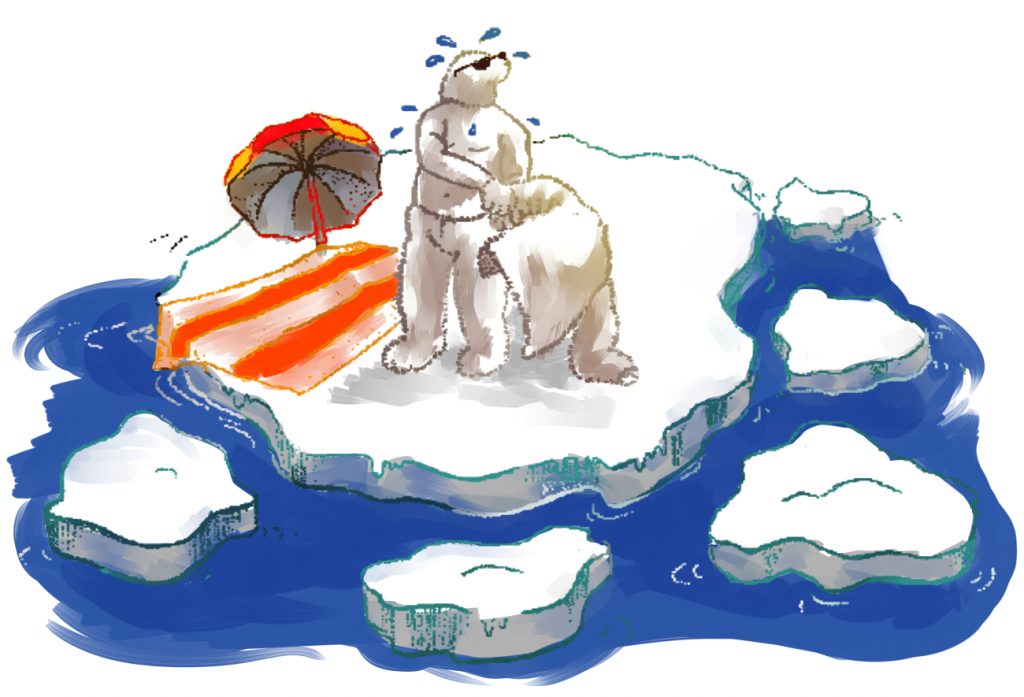
“Climate change is already taking effect in terms of some of the life support systems. For instance, in the Maldives, there is infiltration of freshwater reserves by sea water. In many places, there is a degree of brackishness in the drinking water. You can see this in the Caribbean. You can certainly see this in the Pacific. Fresh water reserves have been contaminated. Whether it is the storm surge or the sea rising, the [salt] waters get into the fresh water.
“Climate change is the type of global issue not of our making, so it raises questions of equity and ethics.”
When we think of our world, we can picture it as it appears on a globe—a collection of continents and nations separated by oceans, or, we can see it from the viewpoint of an astronaut, with areas of land, oceans, and swirling clouds.

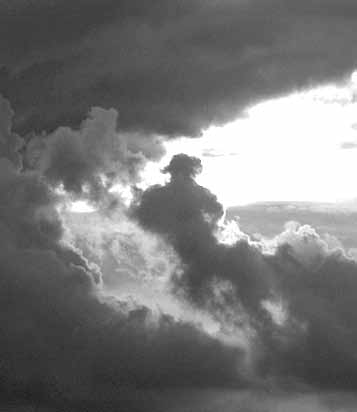
QUESTION 10.2
- What is your opinion?
- What are the ethical issues that come to mind when you think about climate change?
- What do you believe is your moral duty to others?
- What do you believe is your moral duty to the society you live in?
- What do you believe is your moral duty to the wider world community?
- What do you believe is your moral duty to our Earth?
QUESTION 10.3.
How does each point of view help us understand our home planet and how it is changing?

CC10.3. Investigation:
Personal Opinion Essay
Write an essay describing your personal position on global climate change. The essay should be written according to the format and length requirements set by your teacher. In preparing to write your essay, please do the following:
- Draw a line down the center of a sheet of paper. On the left, list the most important points you want to make.
- On the right side, list any arguments that people who disagree with you might make.
- Decide what actions you could take that would reflect your position regarding global climate change. List these on the bottom or back side of the paper.
- Share your ideas with a classmate. Find out what he or she thinks, and discuss the points on which you agree and differ.
- Make an outline of your essay. Decide on the order in which to present your main points so that your opinion is clear and logical. Under each main point, explain your opinion and why you disagree with people who might hold an opposite view. End the essay with what actions you and others might take (or not take) that reflect your opinions on this subject. Choose a title that captures your most important idea or conclusion.
Kathy Jetnil-Kijiner, who is 26 and from the Marshall Islands in Micronesia,
was chosen to speak at the UN Climate Summit in New York 2014 September 23rd.
Here is Kathy’s poem “Tell Them” that concerns climate change:


CC10.4. Investigation:
Your Vote on Energy Measures
Analyze proposed legislation and take a stance in favor or opposed.
~~~

CC10.5. Investigation: Climate and Renewable Energy Solutions
Visit these sites to explore an extensive array actions that make sense to take regardless of their climate impact since they have intrinsic benefits to communities and economies, improving lives, creating jobs, restoring the environment, enhancing security, generating resilience, and advancing human health. Choose one that especially interests you, report on it, and visualize how it could affect your community.
- Climate Change Solutions Simulator – EN-ROADS (developed by Climate Interactive, Ventana Systems, and MIT Sloan)
- Drawdown website
- The Solutions Project, dedicated to achieving 100% renewable energy worldwide. http://www.thesolutionsproject.org/
- Scientific American article by Mark Jacobson
- National Geographic: A Blueprint for a Carbon-Free World
- Companies committed to 100% renewable power – https://www.there100.org/re100-members
[This Investigation overlaps with one in Energy Use chapter 10.]
Talking About Climate Change
People have a tendency to not talk about climate change. This may be for many reasons. It’s controversial in many respects (best solutions) but not others (climate change is really happening and humans affect it). It also seems to be such an immense problem that whatever we do may not be enough. There are a number of voices we can hear to help us deal with the problem and not be paralyzed by it. A good example is Katharine Hayhoe, Chief Scientist for The Nature Conservancy and an atmospheric scientist whose research focuses on understanding the impacts of climate change on people and the planet. Listen to her TED talk from November 2018, The most important thing you can do to fight climate change: talk about it.

